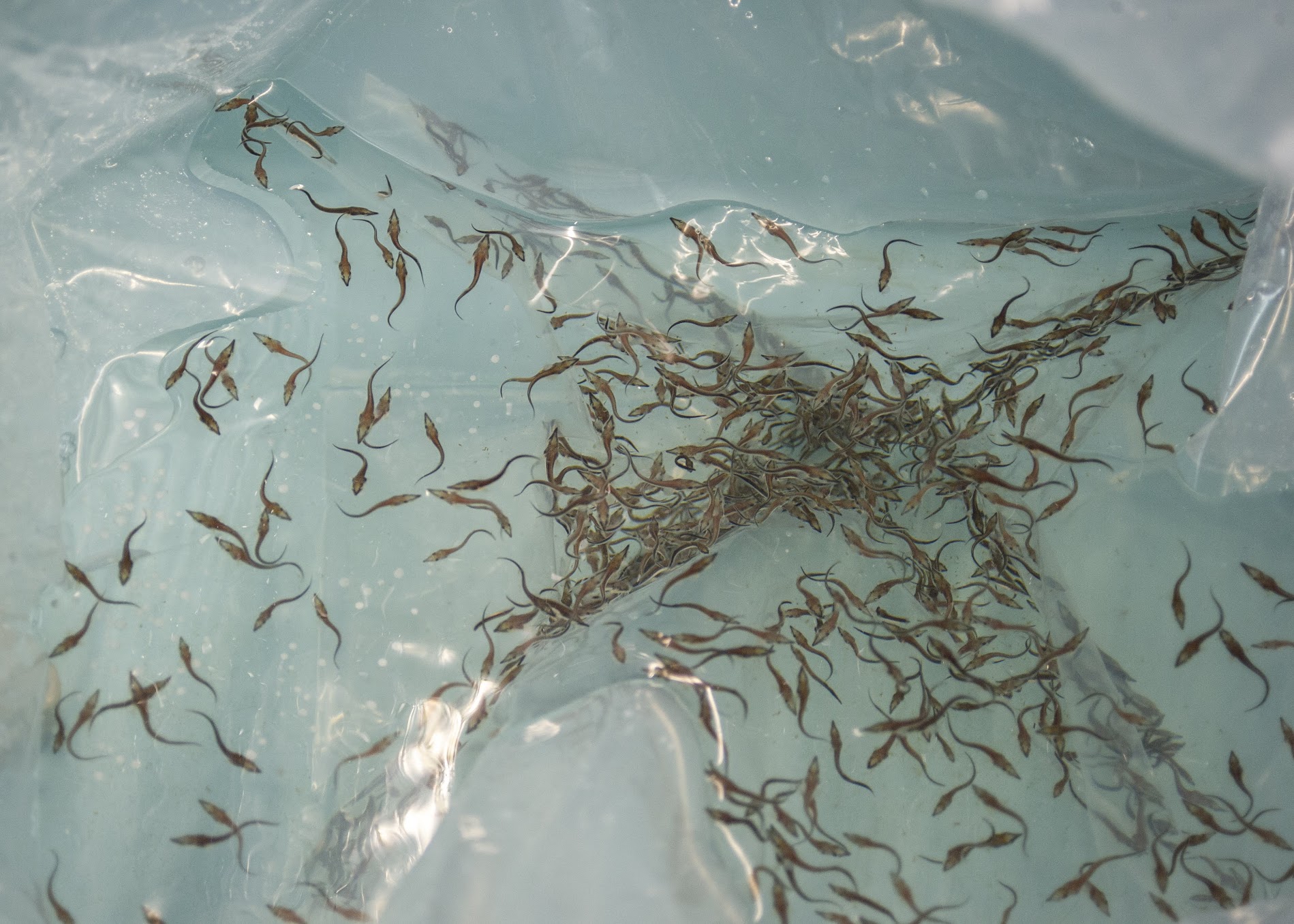On Exhibit
Ridges to Rivers
The lake sturgeon is a species that has remained virtually unchanged since swimming alongside the dinosaurs. Populations of this fish have declined due to pollution, habitat destruction and overharvesting. Lake sturgeon may be able to live for 150 years. They do not have typical teeth but instead have wide "crushing plates" in the back of their throats. They use these to crush clams, mussels and crustaceans. <br><br>
Once plentiful in the Tennessee River, lake sturgeon were extirpated with additions of the dams during the 1900s. In fact, sturgeon worldwide are threatened due to reduced habitat and overfishing. <br><br>
While the Lake Sturgeon is not federally protected, it is considered imperiled in 18 states, including being Endangered in Tennessee. With the help of our partners, we have reintroduced nearly 250,000 Lake Sturgeon to their native waters in the Tennessee River system. <br><br>
Along with reintroduction, we are using technology to learn more about the Lake Sturgeon. To date we have implanted sonic tags into Lake Sturgeon to track their movements in the Tennessee River. We hope to answer questions about where the fish will spawn in the coming years, where they hang out in the hot summer months and how they move through dams in the river system.
Lake Sturgeon Cam
Brought to you by EPB
Lake Sturgeon possess four whiskers, called barbels, on the underside of their head in front of their mouth. These barbels are covered with taste buds so the sturgeon can “taste” food on the river bottom before putting it in their mouths! They also have electricity-detecting organs on the underside of their head that detect the electric fields emitted by all living animals. This helps them find aquatic insects and mollusks that may be buried in the bottom of rivers and streams.
More on the Lake Sturgeon






